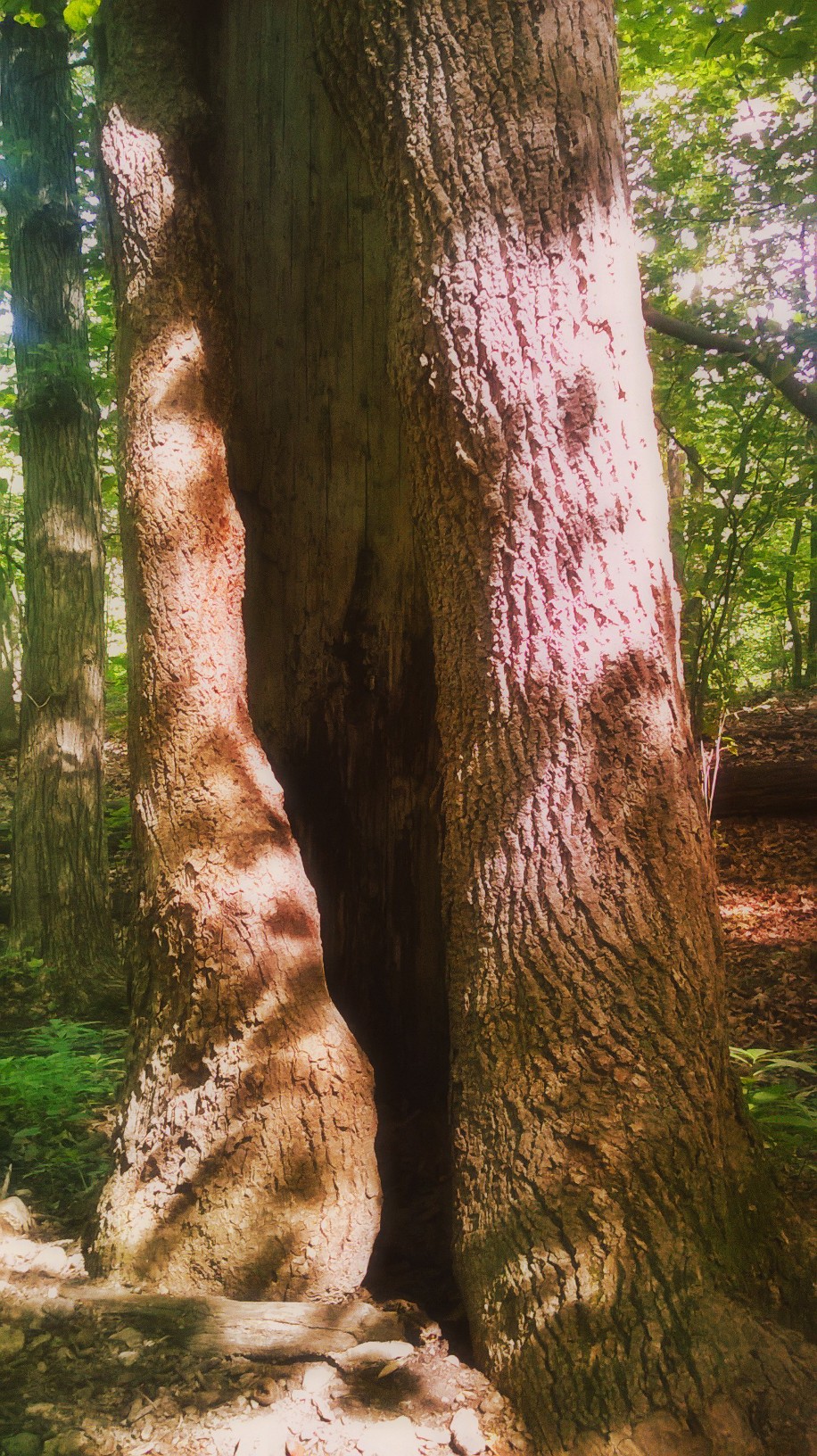
Allow me to introduce the Addis White Oak. This giantess, Quercus Alba, rears up from Greenwood Cemetery higher than I can guess. She would easily offer generous shade to a four-story home; it’s common for white oaks to reach heights between 80 and 100 feet.


•
Her extended limbs stretch outward at great, wide angles in all directions, easily as far as she is tall, and her lower branches run almost parallel to the earth. She wears gently round-tipped leaves, most of which are about eight inches in length, longer than my hand.

Her bark is far from white, but rather varying shades of gray. It is so scaled and deeply grooved, I can slip my fingers into fissured clefts. In some areas, her bark rises several inches from her in trunk in long sheaths.

Her roots are well anchored in the earth; her toes and ankles are felted with moss and lichen. She is just one of several enormous trees in this quiet little cemetery, and she is not the largest. I call her the Addis Oak for the family buried at her feet. Standing beneath her, I hear the creak and rustle of Time passing.

In an effort to estimate this tree’s age, I followed a simple formula — measure the trunk’s width at about four-and-a-half feet from the ground (137 inches); divide this number by pi (137 inches ÷ 3.141 = 43.61); multiply this number by the tree’s growth rate (white oak growth rate is 5, therefore 43.61 x 5 = 218.08), which makes this tree, by rough estimate, over two hundred years old. White oaks can reach ages between 200 and 300 years. Truly impressive. This is by no means the oldest white oak — the Wye Oak in Maryland was estimated to be over 450 years old before it fell in a thunderstorm in 2002. Another venerable white oak, the Great White Oak in Basking Ridge, New Jersey — ailing, though still standing — is thought to be over 600 years.











